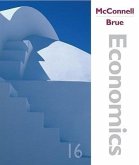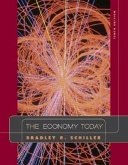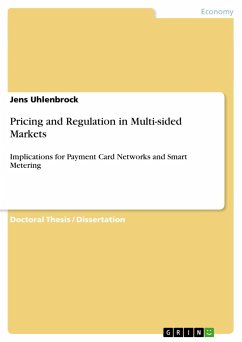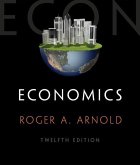- Gebundenes Buch
- Merkliste
- Auf die Merkliste
- Bewerten Bewerten
- Teilen
- Produkt teilen
- Produkterinnerung
- Produkterinnerung
States that innovative texts in mathematics, science, and foreign languages have achieved pedagogical gains by abandoning the traditional encyclopedic approach in favor of attempting to teach a short list of core principles in depth. This book introduces a short list of core principles.
Andere Kunden interessierten sich auch für
![Economics+ Discoverecon Code Card Economics+ Discoverecon Code Card]() David ColanderEconomics+ Discoverecon Code Card206,99 €
David ColanderEconomics+ Discoverecon Code Card206,99 €![The Economy Today + Discoverecon Code Card + Student Problem Sets The Economy Today + Discoverecon Code Card + Student Problem Sets]() Bradley R SchillerThe Economy Today + Discoverecon Code Card + Student Problem Sets206,99 €
Bradley R SchillerThe Economy Today + Discoverecon Code Card + Student Problem Sets206,99 €![Gen Combo Looseleaf the Micro Economy Today; Connect Access Card [With Access Code] Gen Combo Looseleaf the Micro Economy Today; Connect Access Card [With Access Code]]() Bradley R. SchillerGen Combo Looseleaf the Micro Economy Today; Connect Access Card [With Access Code]279,99 €
Bradley R. SchillerGen Combo Looseleaf the Micro Economy Today; Connect Access Card [With Access Code]279,99 €![Economics + Discoverecon Online with Paul Solman Videos Economics + Discoverecon Online with Paul Solman Videos]() Campbell R. McconnellEconomics + Discoverecon Online with Paul Solman Videos195,99 €
Campbell R. McconnellEconomics + Discoverecon Online with Paul Solman Videos195,99 €![The Economy Today + Discoverecon with Paul Solman Videos The Economy Today + Discoverecon with Paul Solman Videos]() Bradley R. SchillerThe Economy Today + Discoverecon with Paul Solman Videos206,99 €
Bradley R. SchillerThe Economy Today + Discoverecon with Paul Solman Videos206,99 €![Pricing and Regulation in Multi-sided Markets Pricing and Regulation in Multi-sided Markets]() Jens UhlenbrockPricing and Regulation in Multi-sided Markets47,95 €
Jens UhlenbrockPricing and Regulation in Multi-sided Markets47,95 €![Economics (with Digital Assets, 2 Term (12 Months) Printed Access Card) Economics (with Digital Assets, 2 Term (12 Months) Printed Access Card)]() Roger A ArnoldEconomics (with Digital Assets, 2 Term (12 Months) Printed Access Card)552,99 €
Roger A ArnoldEconomics (with Digital Assets, 2 Term (12 Months) Printed Access Card)552,99 €-
-
-
States that innovative texts in mathematics, science, and foreign languages have achieved pedagogical gains by abandoning the traditional encyclopedic approach in favor of attempting to teach a short list of core principles in depth. This book introduces a short list of core principles.
Hinweis: Dieser Artikel kann nur an eine deutsche Lieferadresse ausgeliefert werden.
Hinweis: Dieser Artikel kann nur an eine deutsche Lieferadresse ausgeliefert werden.
Produktdetails
- Produktdetails
- Verlag: McGraw Hill LLC
- Revised
- Seitenzahl: 560
- Erscheinungstermin: Juli 2003
- Englisch
- Abmessung: 276mm x 217mm x 20mm
- Gewicht: 1161g
- ISBN-13: 9780072882476
- ISBN-10: 0072882476
- Artikelnr.: 21067647
- Herstellerkennzeichnung
- Libri GmbH
- Europaallee 1
- 36244 Bad Hersfeld
- gpsr@libri.de
- Verlag: McGraw Hill LLC
- Revised
- Seitenzahl: 560
- Erscheinungstermin: Juli 2003
- Englisch
- Abmessung: 276mm x 217mm x 20mm
- Gewicht: 1161g
- ISBN-13: 9780072882476
- ISBN-10: 0072882476
- Artikelnr.: 21067647
- Herstellerkennzeichnung
- Libri GmbH
- Europaallee 1
- 36244 Bad Hersfeld
- gpsr@libri.de
Robert H. Frank received his B.S. in mathematics from Georgia Tech in 1966, then taught math and science for two years as a Peace Corps Volunteer in rural Nepal. He received his M.A. in statistics from the University of California at Berkeley in 1971, and his Ph.D. in economics in 1972, also from U.C. Berkeley. He is the Goldwin Smith Professor of Economics at Cornell University, where he has taught since 1972 and where he currently holds a joint appointment in the department of economics and the Johnson Graduate School of Management. During leaves of absence from Cornell, he served as chief economist for the Civil Aeronautics Board from 1978 to 1980 and was a Fellow at the Center for Advanced Study in the Behavioral Sciences in 1992-93. He has published on a variety of subjects, including price and wage discrimination, public utility pricing, the measurement of unemployment spell lengths, and the distributional consequences of direct foreign investment. For the past several years, his research has focused on rivalry and cooperation in economic and social behavior. His books on these themes include Choosing the Right Pond: Human Behavior and the Quest for Status (Oxford University Press, 1985) and Passions Within Reason: The Strategic Role of the Emotions (W.W. Norton, 1988). He and Philip Cook are co-authors of The Winner-Take-All Society (The Free Press, 1995) , which received a Critics Choice Award and appeared on both the New York Times Notable Books list and Business Week Ten Best list for 1995. His most recent general interest publication is Luxury Fever (The Free Press, 1999). Professor Franks books have been translated into eight languages. He has been awarded an Andrew W. Mellon Professorship (1987 1990), a Kenan Enterprise Award (1993), and a Merrill Scholars Program Outstanding Educator Citation (1991).
Part 1 Introduction 1. Thinking Like an Economist 2. Comparative Advantage:
The Basis for Exchange 3. Supply and Demand: An Introduction Part 2
Macroeconomics: Issues and Data 4. Macroeconomics: The Birds-Eye View of
the Economy 5. Measuring Economic Activity: GDP and Unemployment 6.
Measuring the Price Level and Inflation Part 3 The Long Run 7. Economic
Growth, Productivity, and Living Standards 8. Workers, Wages, and
Unemployment in the Modern Economy 9. Saving and Capital Formation 10.
Money, Prices, and the Federal Reserve 11. Financial Markets and
International Capital Flows Part 4 The Short Run 12. Short-term Economic
Fluctuations: An Introduction 13. Spending and Output in the Short Run 14.
Stabilizing the Economy: The Role of the Fed 15. Inflation and Aggregate
Supply Part 5 The International Economy 16. International Trade and Trade
Policy 17. Exchange Rates and the Open Economy
The Basis for Exchange 3. Supply and Demand: An Introduction Part 2
Macroeconomics: Issues and Data 4. Macroeconomics: The Birds-Eye View of
the Economy 5. Measuring Economic Activity: GDP and Unemployment 6.
Measuring the Price Level and Inflation Part 3 The Long Run 7. Economic
Growth, Productivity, and Living Standards 8. Workers, Wages, and
Unemployment in the Modern Economy 9. Saving and Capital Formation 10.
Money, Prices, and the Federal Reserve 11. Financial Markets and
International Capital Flows Part 4 The Short Run 12. Short-term Economic
Fluctuations: An Introduction 13. Spending and Output in the Short Run 14.
Stabilizing the Economy: The Role of the Fed 15. Inflation and Aggregate
Supply Part 5 The International Economy 16. International Trade and Trade
Policy 17. Exchange Rates and the Open Economy
Part 1 Introduction 1. Thinking Like an Economist 2. Comparative Advantage:
The Basis for Exchange 3. Supply and Demand: An Introduction Part 2
Macroeconomics: Issues and Data 4. Macroeconomics: The Birds-Eye View of
the Economy 5. Measuring Economic Activity: GDP and Unemployment 6.
Measuring the Price Level and Inflation Part 3 The Long Run 7. Economic
Growth, Productivity, and Living Standards 8. Workers, Wages, and
Unemployment in the Modern Economy 9. Saving and Capital Formation 10.
Money, Prices, and the Federal Reserve 11. Financial Markets and
International Capital Flows Part 4 The Short Run 12. Short-term Economic
Fluctuations: An Introduction 13. Spending and Output in the Short Run 14.
Stabilizing the Economy: The Role of the Fed 15. Inflation and Aggregate
Supply Part 5 The International Economy 16. International Trade and Trade
Policy 17. Exchange Rates and the Open Economy
The Basis for Exchange 3. Supply and Demand: An Introduction Part 2
Macroeconomics: Issues and Data 4. Macroeconomics: The Birds-Eye View of
the Economy 5. Measuring Economic Activity: GDP and Unemployment 6.
Measuring the Price Level and Inflation Part 3 The Long Run 7. Economic
Growth, Productivity, and Living Standards 8. Workers, Wages, and
Unemployment in the Modern Economy 9. Saving and Capital Formation 10.
Money, Prices, and the Federal Reserve 11. Financial Markets and
International Capital Flows Part 4 The Short Run 12. Short-term Economic
Fluctuations: An Introduction 13. Spending and Output in the Short Run 14.
Stabilizing the Economy: The Role of the Fed 15. Inflation and Aggregate
Supply Part 5 The International Economy 16. International Trade and Trade
Policy 17. Exchange Rates and the Open Economy

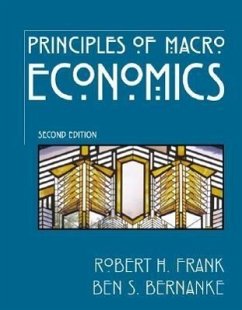

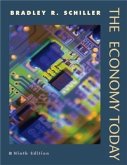
![Gen Combo Looseleaf the Micro Economy Today; Connect Access Card [With Access Code] Gen Combo Looseleaf the Micro Economy Today; Connect Access Card [With Access Code]](https://bilder.buecher.de/produkte/51/51761/51761243m.jpg)
